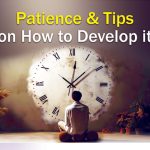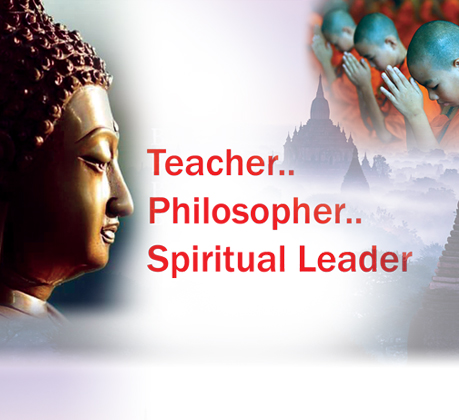Buddha, born with the name Siddhartha Gautama, was a teacher, philosopher and spiritual leader who is considered the founder of Buddhism.
He lived and taught in the region around the border of modern- day Nepal and India sometime between the 6th to 4th Century B.C. The name Buddha means “one who is awakened” or “the enlightened one.” While scholars agree that Buddha did in
fact exist, the specific dates and events of his life are still debated. According to the most widely known story of his life, after experimenting with different teachings for years, and finding none of them acceptable, Siddhartha Gautama
spent a fateful night in deep meditation beneath a tree. During his meditation, all of the answers he had been seeking became clear, and he achieved full awareness, thereby becoming Buddha. 12 B R I D G E International English Monthly
September-2024 Website: bridgemagazineusa.com 4
Early Life
Buddha was born in the 6th century B.C., or possibly as early as 624 B.C., according to some scholars. Other researchers believe he was born later, even as late as 448 B.C. And some
Buddhists believe Gautama Buddha lived from 563 B.C. to 483 B.C. But virtually all scholars believe Siddhartha Gautama was born in Lumbini in present-day Nepal. He belonged to a large clan called the Shakyas. In 2013, archaeologists working
in Lumbini found evidence of a tree shrine that predated other Buddhist shrines by some 300 years, providing new evidence that Buddha were probably born in the 6th century B.C.
Siddhartha Gautama
Siddhartha (“he who achieves his aim”) Gautama grew up the son of a ruler of the Shakya clan. His mother died seven days after giving birth. A holy man, however, prophesied great things for the young Siddhartha. He would either be a great
king or military leader or he would be a great spiritual leader. To protect his son from the miseries and suffering of the world, Siddhartha’s father raised him in opulence in a palace built just for the boy and sheltered him from knowledge
of religion, human hardship and the outside world. According to legend, he married at the age of 16 and had a son soon thereafter, but when Siddhartha was 29 years old, his life changed.
Siddhartha in the Real World
The prince reached adulthood with little experience of the world outside the palace walls, but one day he ventured out with a charioteer and was quickly confronted with the realities of human frailty. He saw a very old man, and Siddhartha’s
charioteer explained that all people grow old. Questions about all he had not experienced led him to take more journeys of exploration, and on these subsequent trips he encountered a diseased man, a decaying corpse and an ascetic.
The charioteer explained that the ascetic had renounced the world to seek release from the human fear of death and suffering. This shook him to the core of his being; he realized that his privileged status would not protect him from
sickness, old age, and death. When he saw a spiritual seeker – a mendicant “holy man” the urge to seek peace of mind arose in him. Siddhartha was overcome by these sights, and the next day, at age 29, he left his kingdom, his wife and his
son to follow a more spiritual path, determined to find a way to relieve the universal suffering that he now understood to be one of the defining traits of humanity.
The Ascetic Life
For the next six years, Siddhartha lived an ascetic life, studying and meditating using the words of various religious teachers as his guide. He practiced his new way of life with a group of five ascetics, and his dedication to his quest
was so stunning that the five ascetics became Siddhartha’s followers. When answers to his questions did not appear, however, he redoubled his efforts, enduring pain, fasting nearly to starvation and refusing water. Whatever he tried,
Siddhartha could not reach the level of insight he sought, until one day when a young girl offered him a bowl of rice. As he accepted it, he suddenly realized that corporeal austerity was not the means to achieve inner liberation, and that
living under harsh physical constraints was not helping him achieve spiritual release. So he had his rice, drank water and bathed in the river.
The five ascetics decided that Siddhartha had given up the ascetic life and would now follow the ways of the flesh, and they promptly left him.
The Buddha Emerges
That night, Siddhartha sat alone under the Bodhi tree, vowing to not get up until the truths he sought came to him, and he meditated until the sun came up the next day. He remained there for several days, purifying his mind, seeing his
entire life, and previous lives, in his thoughts. During this time, he had to overcome the threats of Mara, an evil demon, who challenged his right to become the Buddha. When Mara attempted to claim the enlightened state as his own,
Siddhartha touched his hand to the ground and asked the Earth to bear witness to his enlightenment, which it did, banishing Mara. And soon a picture began to form in his mind of all that occurred in the universe, and Siddhartha finally saw
the answer to the questions of suffering that he had been seeking for so many years. In that moment of pure enlightenment, Siddhartha Gautama became the Buddha.
Teachings
Armed with his new knowledge, the Buddha was initially hesitant to teach, because what he now knew could not be communicated to others in words. According to legend, it was then that the king of gods, Brahma, convinced Buddha to teach, and
he got up from his spot under the Bodhi tree and set out to do just that. He spent the rest of his life teaching people how to realize enlightenment for them. He gave his first sermon in modern-day Sarnath, near Benares, and then walked
from village to village, attracting disciples along the way. He founded the original order of Buddhist nuns and monks, many of whom became great teachers also. About 100 miles away, he came across the five ascetics he had practiced with
for so long, who had abandoned him on the eve of his enlightenment. Siddhartha encouraged them to follow a path of balance instead of one characterized by either aesthetic extremism or sensuous indulgence. He called this path the Middle
Way. To them and others who had gathered, he preached his first sermon (henceforth known as Setting in Motion the Wheel of the Dharma), in which he explained the Four Noble Truths and the Eightfold Path, which became the pillars of
Buddhism.
4 The foundational teaching of Buddhism is the Four Noble truths
1. The First Truth tells us that life is dukkha, a word that doesn’t translate neatly into English. It is often translated as “suffering” but it also means “stressful” and “unable to satisfy.”
2. The Second Truth tells us dukkha has a cause. The immediate cause is craving, and the craving comes from not understanding reality and not knowing ourselves. Because we misunderstand ourselves we are riddled with anxiety and frustration. We
experience life in a narrow, self-centred way, going through life craving things we think will make us happy. But we find satisfaction only briefly, and then the anxiety and craving start again.
3. The Third Truth tells us we can know the cause of dukkha and be liberated from the hamster wheel of stress and craving. Merely adopting Buddhist beliefs will not accomplish this, however. Liberation depends on one’s own insight into the
source of dukkha. Craving will not cease until you realize for yourself what’s causing it.
4. The Fourth Truth tells us that insight comes through practice of the Noble Eightfold Path. The Eightfold Path might be explained as an outline of eight areas of practice including meditation, mindfulness, and living an ethical life that
benefits others that will help us live happier lives and find the wisdom of enlightenment.
The ascetics then became his first disciples and formed the foundation of the Sangha, or community of monks. Women were admitted to the Sangha, and all barriers of class, race, sex and previous background were ignored, with only the desire
to reach enlightenment through the banishment of suffering and spiritual emptiness considered. For the remainder of his years, Buddha travelled, preaching the Dharma (the name given to his teachings) in an effort to lead others along the
path of enlightenment.
Is There a Buddhist Bible?
Not exactly. For one thing, the several schools and denominations of Buddhism do not all use the same canon of scriptures. A text esteemed by one school may be unknown in another. Further, Buddhist scriptures are not considered to be the
revealed words of a God that must be accepted without question. The Buddha taught us to accept no teaching on authority alone, but to investigate it for ourselves. The many sutras and other texts are there to guide us, not to indoctrinate
us. The important point is that Buddhism is not something you believe, but something you do. It’s a path of both personal discipline and personal discovery. People have walked this path for
25 centuries, and by now there are plenty of directions, signposts and markers. And there are mentors and teachers for guidance, as well as many beautiful scriptures.
Death
Buddha died around the age of 80, possibly of an illness from eating spoiled meat or other food. When he died, it is said that he told his disciples that they should follow no leader, but to “be your own light.” The Buddha is undoubtedly
one of the most influential figures in world history, and his teachings have affected everything from a variety of other faiths (as many find their origins in the words of the Buddha) to literature to philosophy, both within India and to
the farthest reaches of the world. Simply put, Buddhism teaches that we all live in a fog of illusions created by mistaken perceptions and “impurities” – hate, greed, ignorance. A buddha is one who is freed from the fog. It is said that
when a buddha dies he or she is not reborn but passes into the peace of Nirvana, which is not a “heaven” but a transformed state of existence.

















Add Comment